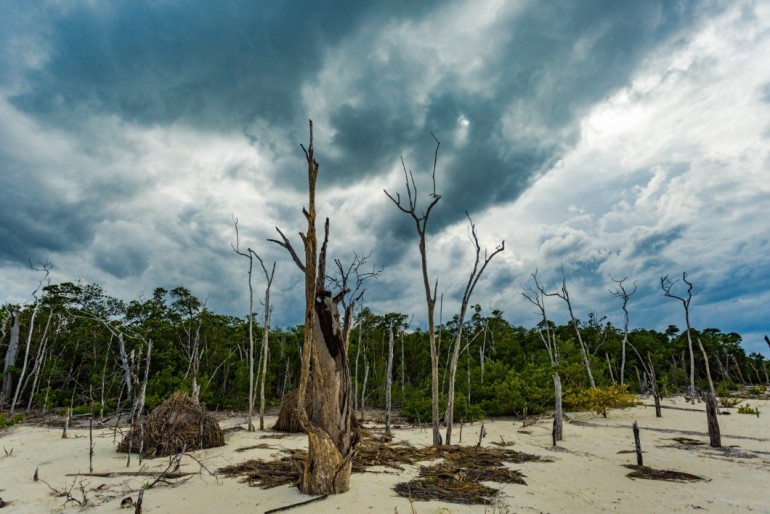Sponsored Listings:
When Caribbean residents remember nature catastrophes such as the hurricanes Irma and Maria that hit the region last fall, they not only think about the loss of hundreds of homes and human lives, but also the overall destruction of precious Caribbean tourism resources, like hotels, yachts and coral reefs; fearing that the devastation is but a sign of what’s to come.
The economy of the Caribbean depends heavily on the travel and tourism industry, representing more employment than other sectors (excluding the public sector), and about 41% of the key exports of goods and services in the region.
The islands of the region are under the alarming threat of the climate change, which has increased lately the intensity and frequency of hurricanes and storms and, with them, affected the sustainability of the beaches, coral reefs and Caribbean tourism infrastructure
Threats to tourism will continue to increase
More than likely, things will continue to worsen for the region. According to climate change forecasts of the World Travel and Tourism Council (WTTC), between 2025 and 2050, the Caribbean will become the most dangerous tourist destination in the world. Following a report by the Inter-American Development Bank, climate change could cost the region more than $22 billion dollars by mid-century, or around 10% of the Caribbean’s current GDP.
This raises the following question: what can be done about the situation? Two strategies that should be considered are long-term planning and meticulous macroeconomic management, since these allow vulnerable countries to save and use resources in the construction of piers, early warning systems, as well as in the readjustment of the necessary infrastructure to survive severe weather phenomena, and later salvage and rebuild what has been destroyed.
Another strategy that could potentially benefit the country is having a particular type of disaster insurance, known as a catastrophe bond (shortened to cat bond), which can be issued by governments or reinsurance companies and backed by US Treasury bills (T-bills). Despite how expensive it can be, these bonds offer tangible benefits, because the investments are based on the severity of the event, rather than estimates of damages. In addition, payments can be made quickly and with little to no dispute, allowing funds to reach the most affected areas and sectors of the economy: essentially, a lifeline for the damage caused by the passage of a hurricane or a storm.

Catastrophe insurance for coral reefs
Last March, the Mexican state of Quintana Roo, in collaboration with the local tourism industry and the non-governmental organization Nature Conservancy, created a trust fund to cover for a similar insurance policy, but strictly for the coral reefs located in the Yucatán Peninsula. The idea of focusing on a particular ecosystem is unique and could be decisive in the long term. Coral reefs serve as a protection for coasts during storms, and generate an income of billions of dollars every year through water activities such as diving, snorkeling and fishing for Caribbean communities. Coral reefs can also be affected by extreme weather conditions. An insurance policy that could speed up the recovery process of coral reefs in the event of a catastrophe could be really beneficial for the Caribbean tourism industry, as well as the restoration of more reefs to protect beaches and hotels against severe weather phenomena in the future.
It’s quite clear that none of these measures will be sufficient on their own. These locations will need to be monitored and supervised to prevent farms and hotels from dumping agricultural runoff and untreated sewage into the sea, which eventually pollute and weaken the coral reefs. It will also demand greater compliance with regulations to stop the destruction of swamps, a vital ecosystem that also protects coasts against storm surges while serving as an essential habitat for fish farming.
Certainly, there are many other intricate and difficult problems related to climate change. Among these are the increasing sea level rise, droughts and water shortage. All of these factors represent potential threats to the tourism sector. Although the Caribbean has already implemented innovative strategies to face many of these problems, there’s still much to be done. Climate change is probably the greatest threat for the region, and the Caribbean will have to fully commit to make as many adjustments as necessary to confront all of the upcoming challenges.
Source: tourism-review.com










